Grandinote Shinai Class-A integrated amplifier
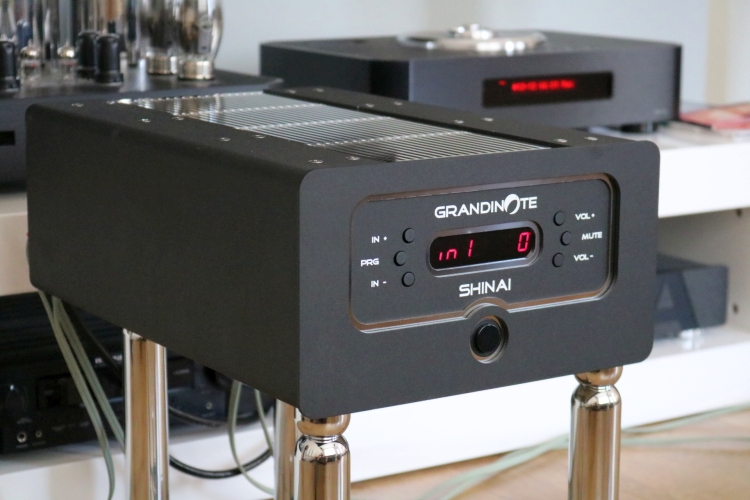
Returning to the Combo Stand
The Artesania Modular Floor platform had made it possible for the Shinai amp to deliver some of the most potent bass that I have heard in this room but now I just had to know. Given the large difference that I heard in the secondary setup, just precisely how would the amp’s sound change in the main system when placed back on its dedicated stand?
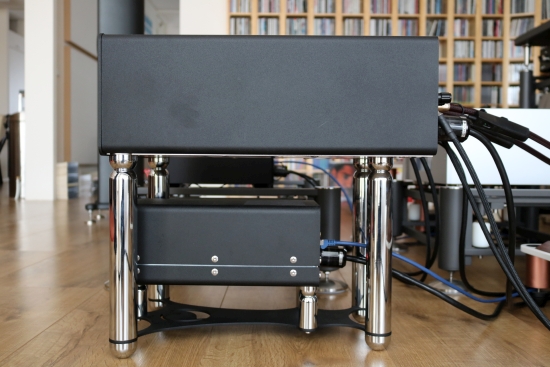
With the Shinai back on the Combo Stand, that question was answered right away and it was fully in line with my earlier perceptions. As in the other setup, the bass became less incisive and a little rounder than with the Artesania platform but it was still amazingly powerful given how “floaty” the Combo Stand is. Importantly, the remaining bluntness that I noted earlier was indeed gone, replaced with a gentle smoothness and captivating liquidity. While the Combo Stand did not raise the amplifier’s resolution, it was now once again clear to me why I originally found the Shinai to deliver the normally unachievable, that is, speed and impact as well as deep saturation and superb flow. It’s the kind of delivery that makes one undergo the performance rather than dissecting it. Remarkably, the amp pulls this off with Xavian Perlas as well as Magico S1’s, two VERY different speakers!
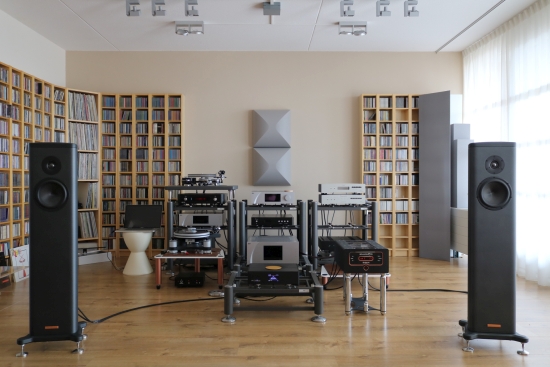
While I prefer the Shinai with its Combo Stand, I also have huge respect for its performance when used with a rigid support such as the Artesania platform. Even if the amp sounds very noticeably “solid-state” that way, I remain impressed with its superlative bass control and dynamic impact. But even when placed on the Combo Stand, it does not have the cuddly and overly smooth sound that I was expecting from a 37-Watt Class-A amplifier.
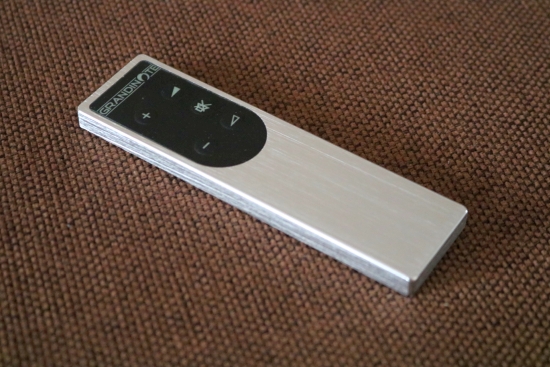
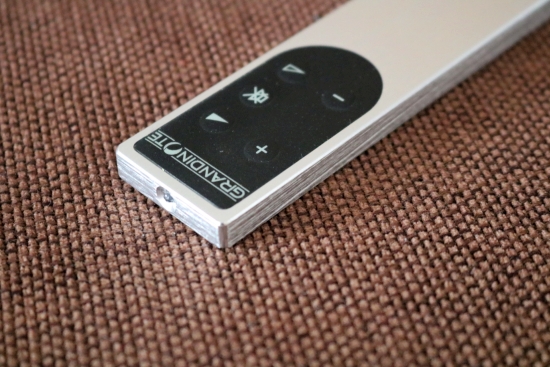
Side Notes
Although I have tried all the cables in my arsenal with the Ayon and specifically chose the van Den Hul Skyline Hybrid as the most ideal cable with the Ayon amplifier, in retrospect, I think I should have also tried the Jorma Trinity speaker cables in the secondary setup with the Xavians and with the Shinai on the Combo Stand. That would probably have tightened up the bass while retaining the amp’s alluring liquidity. Something similar goes for the speaker cables and power cables where warmer-sounding ones could perhaps be more ideal when the amp is placed on a robust platform.
Pierre Costers added the following:
“We get very very nice results with Way Cables by the way… (!) The point for me is to reach the top for a fraction of the price (of a component upgrade), by carefully adapting the power cables and interconnects.
For all the Shinai’s splendor, I find its remote control unit to be unworthy. It works just fine but the layout could be better and its membrane buttons are too clicky and do not provide a nice tactile feel. Even though it is made from solid aluminum and doesn’t look cheap per se, I don’t find it fitting for an almost 12.000-euro Italian amplifier.
Pierre Costers added:
About the remote control, hum… I am already happy to find one. 🙂 And according to the ladies, they found it simple to use and a smart design. Ok, it is not a Homecinema 321 button unit or expensive bling 2kg gold, but personally, I am happy with it. Better than the basic Chinese plastic ones. 🙂
Another aspect that surprised me is that the amplifier’s cabinet is highly resonant. Not only does it ring in a gong-like manner when tapped, it even rings when you sing or speak (to yourself, as I tend to do) when you are near it. Imagine what sound from the speakers will do. However, none of this seems to stand in the way of it sounding absolutely marvelous so this is kind of an academic point.
Conclusion
It’s the seemingly unachievable: a very neutral and linear as well as exceedingly robust amplifier that is also fast, expressive, and dynamic, but equally lush, liquid, and seductive. Then add to this the capability to drive Magico S1 MkII speakers just as easily and as musically pleasingly as small stand mount speakers. The Shinai achieves it all. To be fair, one should ideally include the Combo Stand to achieve the best balance between solidity and liquidity. But just look at that gorgeous assembly, wouldn’t you want the stand for its looks alone?
External Links
Manufacturer: Grandinote
Distributor for the Benelux: Colab
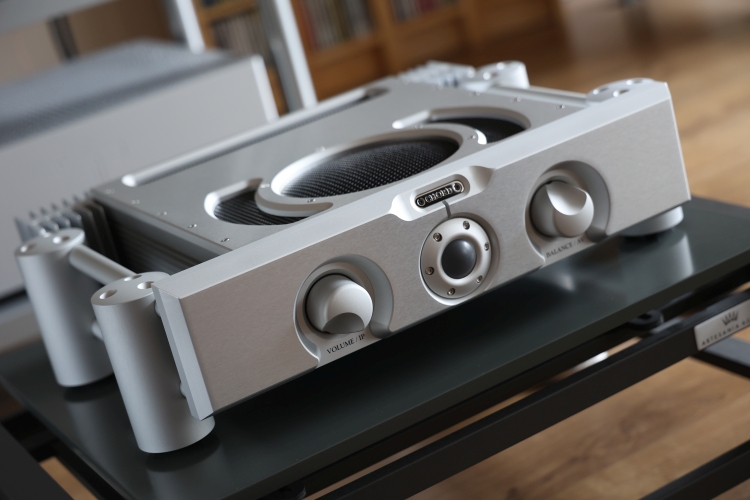
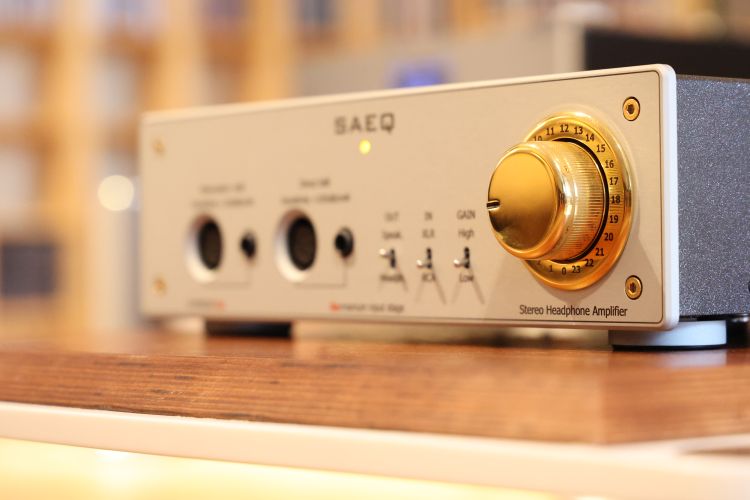
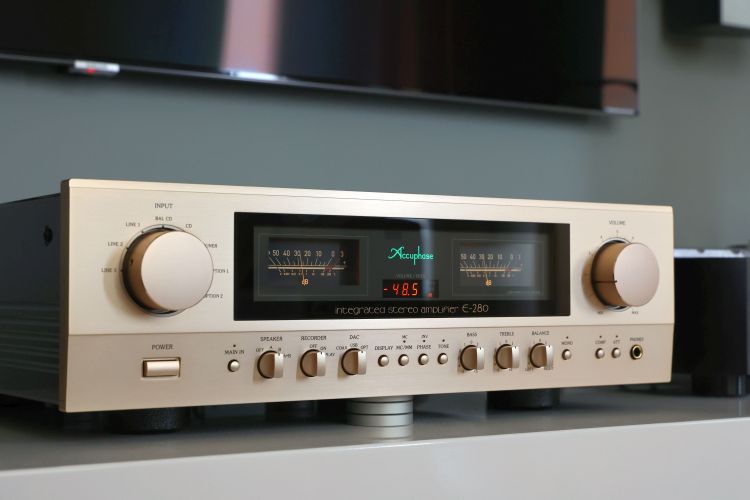
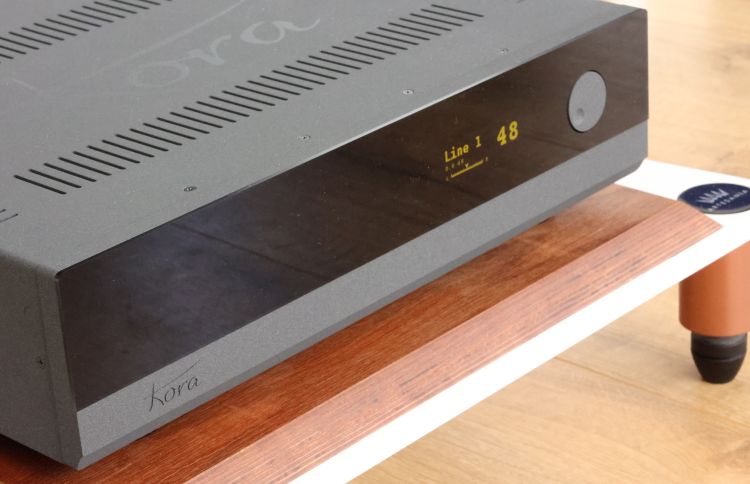
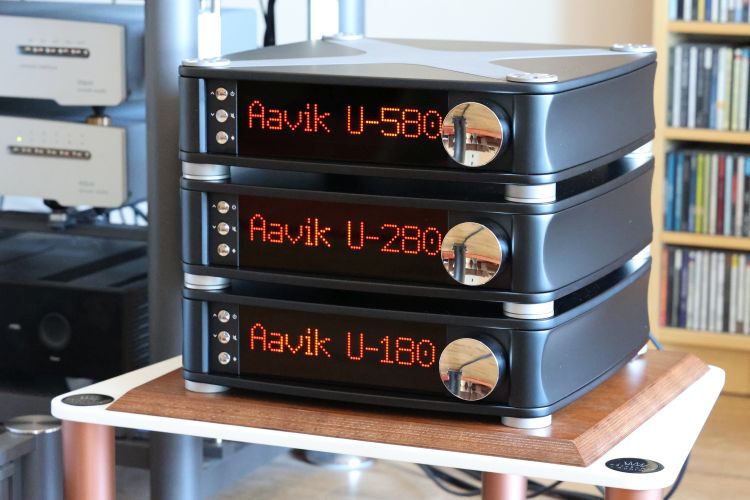
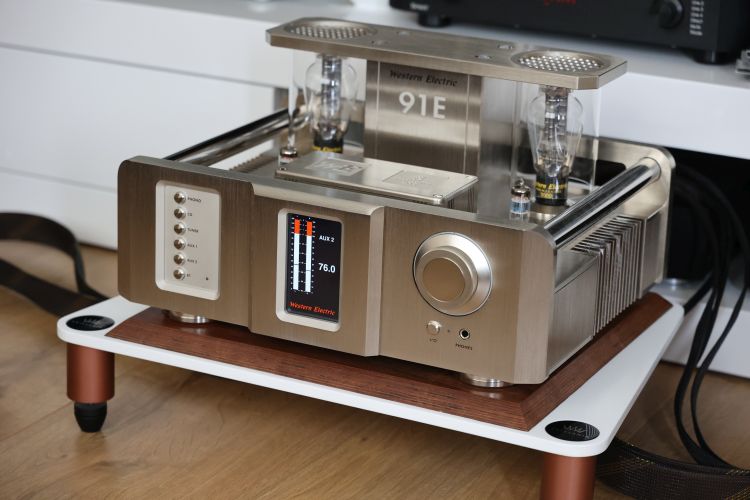
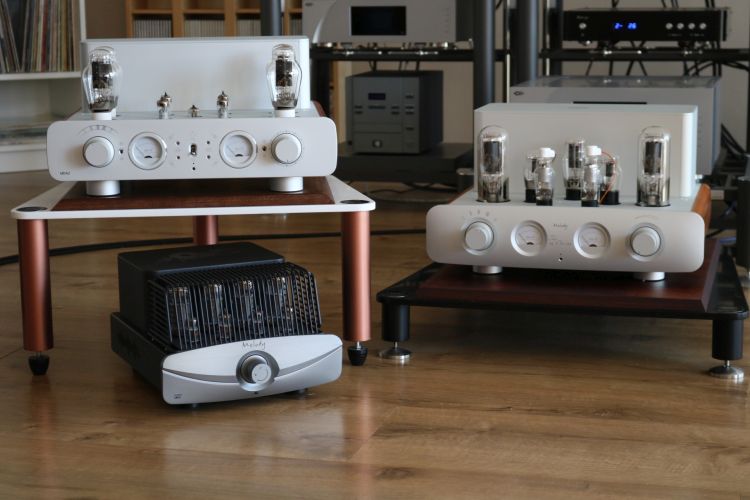
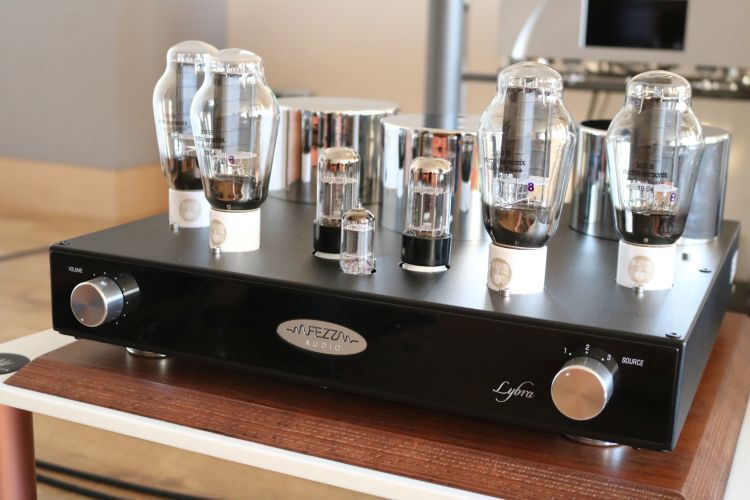
Hello Christiaan,
Good that you finally got a chance to review the Shinai. I have also had the chance to audition the Shinai in my home, but not with the dedicated stand.
I agree that this “little” 37 W amp is one of the most bass potent amplifiers I have had in my home. As you say, I think that part of it is due to the output transformers. An inductor/transformer tend to push current a little longer, it’s “slow” in turning off the current. Which result in a forceful bass delivery that is a little more than the original signal. The found the bass to be fast, detailed and well articulated but maybe a little exaggerated.
Dynamics capabilities are also good, even with by 85 dB TAD speakers. It is almost forcing the sound out of the loudspeakers regardless of if the speakers is trying to hold back. Good high resolution throughout the frequency range.
But I found the upper midrange and the lower treble to be a bit too emphasized and hard at times. Notably on instruments like; clarinet, trumpet, harmonica, electric guitar. Forceful female voices could also have a bit too much bite for my taste, in my system.
The enclosure isn’t worthy and amplifier in this price range. I don’t like the design – to me it looks more like a car heater from the 1960s. But taste is different. What isn’t based on taste is that the enclosure is not sturdy enough. The bent sheet metal resonates very easily. The transformers in the Shinai I had at home did have an audible “mechanical” hum. The amplifier didn’t have a “black background” either. The right channel was audible noisier than the left when you put your ear close to the loudspeakers.
A detail to note is that the volume control has only 31 steps. Although it was not a big problem in my system. The remote isn’t good, I found the response iffy at best.
I was at first greatly impressed by the bass, dynamics, and level of details but I think there is room for improvements, especially in the enclosure and remote. As I wrote I didn’t have the opportunity to hear the Shinai on the dedicated stands but from what I can read in your writing the stand added even more mechanical instability and distortion. Obviously you preferred what the added distortion did to the sound. Maybe like adding second harmonic distortion can result in a more pleasing sound, in this case the added pleasing distortion came from uncontrolled mechanical instability.
It could be that instable platforms could inject pleasing sound and “life” into many other amplifier design too but I don’t think this is a wise path to go down.
Hi Per, I’m with you regarding the casing and the remote, and I can imagine that the upper mid may be a little “in your face” in some combinations. Here, it wasn’t edgy but certainly lively/vivid. Normally, I don’t like “soft” coupling but with this particular stand, I have to admit that it just works well with this amplifier. I don’t hear the stand’s contribution as distortion but as taking away just the right amount of iron-fisted control that may be experienced and excessive as you also noted. What it sounds like most is a reduction in damping factor which to be fair can be interpreted as a rise in distortion, but that needn’t necessarily be the case. I think you will agree that, depending on the setup, an amplifier can also have too much control. With my sample and with these speakers, I hear no hum, mechanical or electrical, nor any noise but I did not put my ear next to the tweeters.
High End Munich 2018 I auditioned this amplifier as it made a very good impression. So good actually that I had it on loan from the that time Dutch distributor. Sound quality was confirmed.
However there are some remarks, as I, being a professional, also checked some of the technology behind the design.
1. The output stage is a pair of bipolar power transistors acting like emitter followers; this means 100% local feedback…;
2. Output transformers are actually autotransformers, which means there are no separate primary and secondary windings; this is comparable to what McIntosh does with it’s solid state power amplifiers;
3. Damping factor is not like specified; it’s been a while but when measuring the output resistance of the amplifier the damping factor was more like 50 at 8 ohm. This was audibly confirmed when listening to the amplifier through a pair of B&W 802. The 4 ohm load (and bass reflex) just made the bass a bit less well controlled.
When well paired with loudspeakers a great amplifier nonetheless!